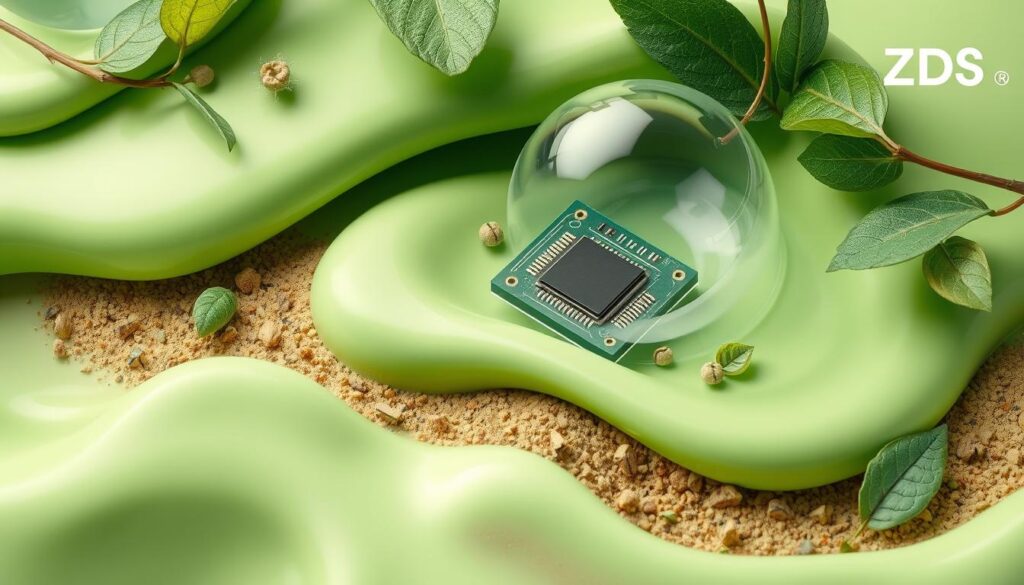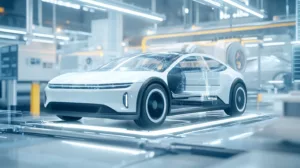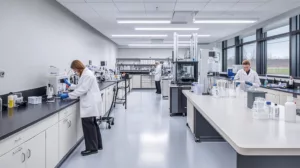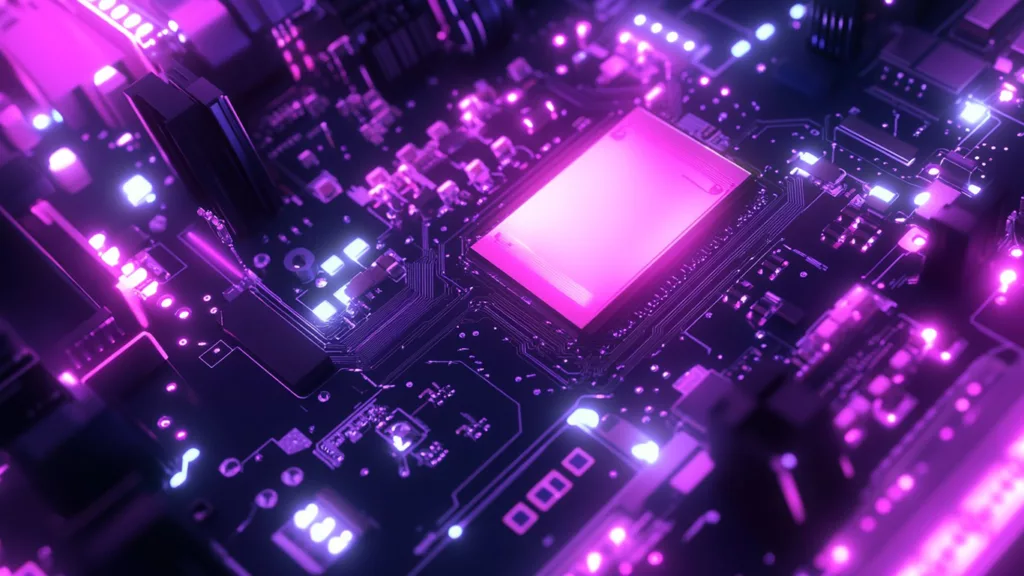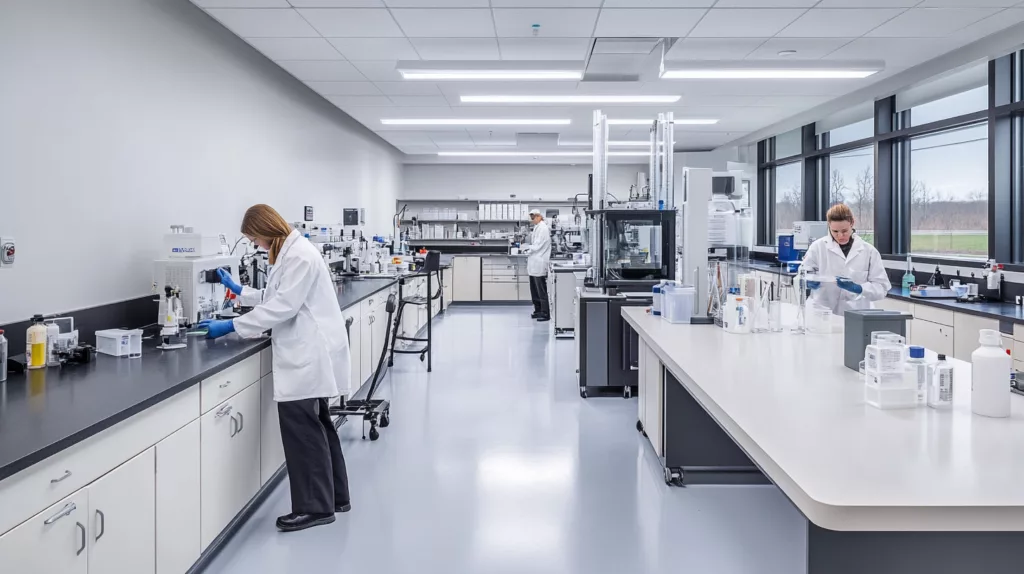In today’s fast-changing world, we need sustainable practices more than ever. This article explores eco-friendly potting solutions, like Low-VOC Polyurethane for Sensitive Electronics. Our team sees the urgent need for materials that protect electronics and are good for the environment.
Low-VOC polyurethane is a top choice for electronics protection. It’s tough and doesn’t harm the environment. We share its benefits with manufacturers and DIY fans, promoting eco-friendly practices.
Key Takeaways
- Low-VOC Polyurethane enhances protection for sensitive electronics.
- Environmentally Friendly Encapsulation reduces health risks for users.
- This material offers exceptional durability in diverse applications.
- Sustainable practices are essential for modern manufacturing.
- We prioritize both quality and ecological responsibility in our solutions.
Introduction to Eco-Friendly Potting
Eco-friendly potting is changing how we use potting compounds in many fields, like electronics. It focuses on materials that release fewer harmful chemicals. This shift is key as companies aim to be more sustainable.
Using VOC-free potting resin helps protect electronics and supports the environment. It meets the growing demand for green products. Eco-friendly potting also helps meet strict rules and improves product quality and life.
The future of making electronics is looking good with eco-friendly methods. We’re working on new ways to be better for the planet and more efficient. This includes using materials that are good for the environment.
What is Low-VOC Polyurethane?
Low-VOC Polyurethane is a big step forward in polymer tech. It cuts down on volatile organic compounds during curing. These compounds can harm people and the environment.
This material keeps key Polyurethane Properties like sticking well, being flexible, and resisting chemicals. These are vital for electronic uses.
Knowing the perks of Low-VOC Polyurethane is key for those in the field. It meets tough environmental rules and works great in many settings. We push for eco-friendly potting options that don’t lose quality or toughness.

Benefits of Low-VOC Polyurethane in Electronics Encapsulation
Using low-VOC polyurethane in electronics has many benefits. It improves product reliability and helps the environment. This method makes products last longer and is better for our planet.
Enhanced Durability and Longevity
Low-VOC polyurethane makes electronics last longer. It protects against moisture, temperature changes, and chemicals. This means electronics are less likely to break down.
Products last longer, saving money on repairs and replacements. This is good for businesses and helps the environment.
Environmentally Friendly Properties
Low-VOC polyurethane is better for the air we breathe. It has fewer harmful chemicals, meeting strict environmental rules. This choice shows a company cares about the planet.
By choosing these materials, companies show they value the environment. To learn more, visit the benefits of low-VOC polyurethane.
Low-VOC Polyurethane Potting for Sensitive Electronics
Sensitive electronics need top-notch protection against the environment. Low-VOC Polyurethane Potting is a reliable choice for this. It meets strict standards, keeping your components safe from moisture, dust, and physical damage.
Low-VOC polyurethane potting has many benefits:
- It acts as a moisture barrier to stop corrosion and short circuits, extending your electronics’ life.
- It’s flexible, absorbing shocks to keep delicate parts safe.
- It has low outgassing properties, perfect for tight spaces or sensitive areas like aerospace and defense.
These features make Low-VOC Polyurethane Potting a key choice for those who value quality and reliability in protecting sensitive electronics.
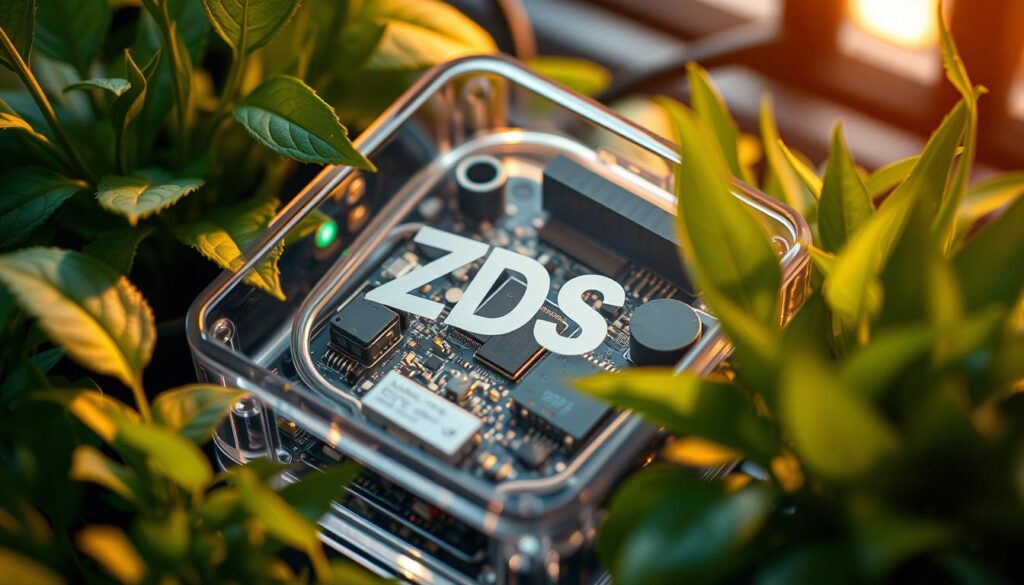
Comparing Potting Compounds: Low-VOC vs Traditional Options
When looking for the best potting solutions, we often find big differences. Low-VOC polyurethane and traditional potting materials stand out. Knowing these differences is key to better health and the environment.
Impact on Health and Environment
Traditional potting compounds have a lot of VOCs. These chemicals can harm workers who handle them. They also make indoor air worse and can hurt the environment.
Low-VOC polyurethane is a better choice. It has fewer harmful emissions. This makes the air inside better and keeps workers healthier. Companies that care about the planet find it fits their goals.
| Aspect | Traditional Potting | Low-VOC Polyurethane |
|---|---|---|
| VOCs | High levels present | Significantly reduced |
| Health Risks | Increased hazards for workers | Safer handling and application |
| Indoor Air Quality | Compromise in quality | Improved air quality |
| Environmental Impact | Higher impact due to emissions | Lower impact, supports sustainability |
Choosing Low-VOC polyurethane is good for now and the future. It’s better for health and the planet. We suggest using these new potting solutions for a safer world.
Choosing the Right Electronic Potting Materials
Choosing the right Electronic Potting Materials is key for protecting sensitive parts. The right Potting Compound Selection can greatly improve reliability and function in electronics.
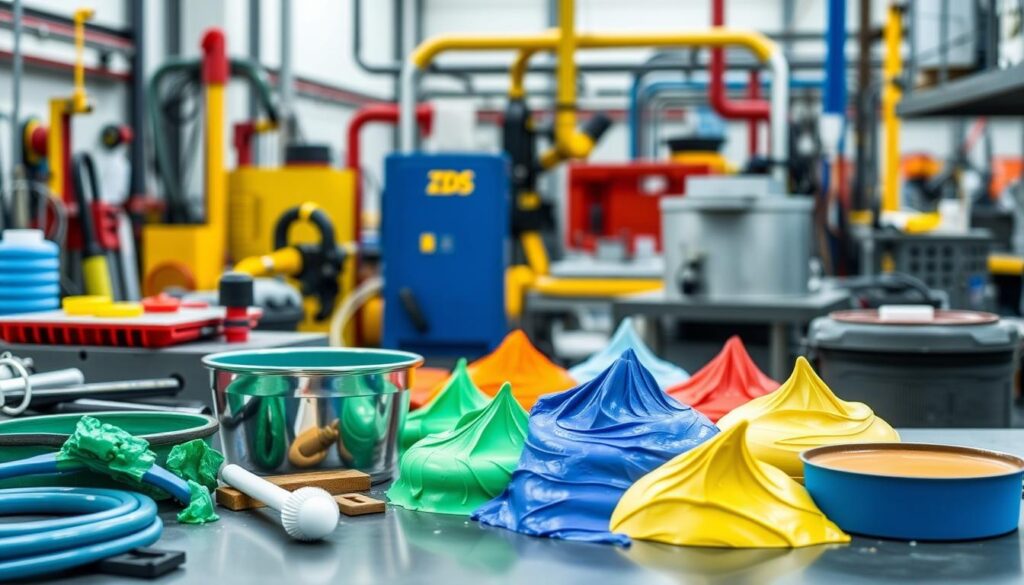
- Compatibility: Make sure the potting solution works well with the materials and parts you’re protecting. Using the wrong materials can cause problems.
- Application Methods: Think about how you’ll apply the material. You can pour, brush, or spray it. This choice affects how well it works.
- Curing Time and Conditions: Understand what the material needs to cure. Each one might need a certain temperature or humidity to work best.
Choosing wisely for Electronic Potting Materials helps protect your projects from the environment. This makes them last longer.
| Factor | Considerations | Impact on Performance |
|---|---|---|
| Compatibility | Check for chemical compatibility with components | Prevents damage and enhances life span |
| Application Methods | Evaluate ease of application techniques | Affects coverage and quality of encapsulation |
| Curing Time | Know required curing duration and conditions | Ensures proper setting and strength |
Applications of Low-Outgassing Encapsulation
Low-outgassing encapsulation is key in many fields. It makes sure electronic parts work well in tough places. It also cuts down on contamination risks, making products better and more reliable.
In Aerospace and Defense
In aerospace and defense, parts face extreme conditions. Using low-outgassing materials protects them from damage. This keeps them working well, even in harsh environments.
Consumer Electronics Uses
Today’s gadgets need moisture barriers to keep parts safe. Low-outgassing materials, like low-VOC polyurethane, are vital. They improve how devices look and work, making them last longer. For more info, check out low-outgassing encapsulation options.
| Industry | Benefits of Low-Outgassing Encapsulation |
|---|---|
| Aerospace and Defense | Prevents contamination and performance degradation |
| Consumer Electronics | Enhances moisture protection and extends lifespan |
How to Apply Low-VOC Polyurethane Potting
Applying Low-VOC Potting needs careful steps for the best results. By using the right Potting Application Techniques, we get strong adhesion and good protection for sensitive electronics.
Start by preparing the surface. Clean and dry the parts well to remove dirt that can harm adhesion. A clean surface helps in better bonding and performance.
Then, think about the best application method for your project. You can pour, brush, or use a syringe. Pouring works well for big areas, while a syringe is better for small details.
Lastly, let the potting material cure as the maker says. The curing time is key to getting the strongest bond. Following these steps helps in successful low-VOC polyurethane potting, making electronic devices more reliable.
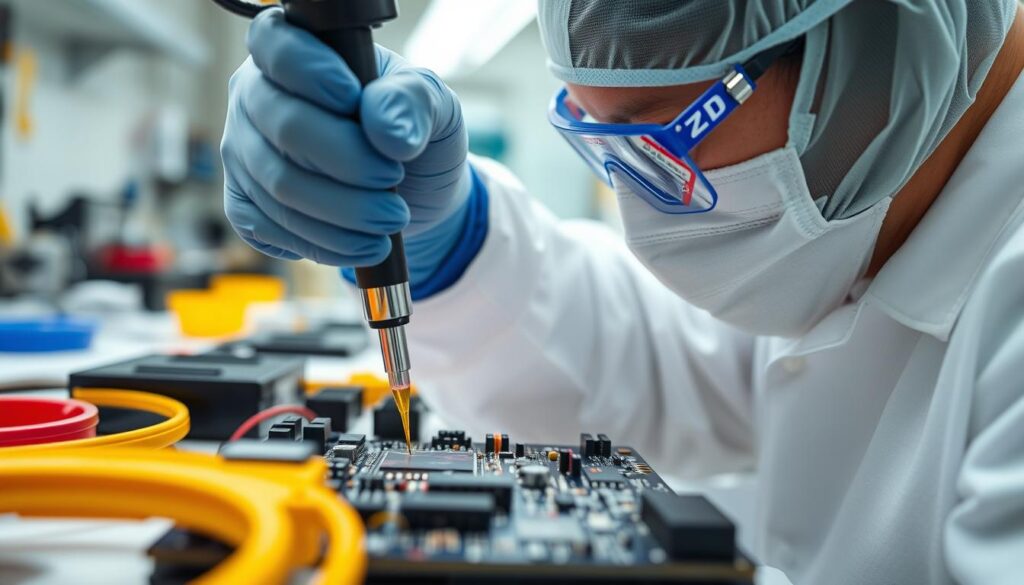
Case Studies: Successful Implementations of Eco-Friendly Potting
We’ve explored eco-friendly potting solutions and seen their success in many areas. Our work with manufacturers shows how new methods improve products. These methods make products better and more reliable.
ZDS™ Client Success Stories
We’ve worked with top electronics companies and collected ZDS™ Client Success Stories. These stories show how using low-VOC potting helps products last longer and work better. Our clients say our solutions make their products more reliable.
Real-World Results and Feedback
Our clients’ feedback is very helpful. It shows our eco-friendly potting helps the environment and makes products more efficient. They’ve seen:
- Products last up to 30% longer.
- Less waste in making products.
- Customers are happier because products fail less.
These successes prove we’re dedicated to quality and sustainability in electronics. For more on our materials, check out our guide on Electrical Potting.
| Client Industry | Key Benefits Achieved | Feedback Highlights |
|---|---|---|
| Automotive | Improved reliability and longevity | “The products have outperformed our expectations.” |
| Aerospace | Enhanced performance under extreme conditions | “We are impressed with the sustainability aspects.” |
| Consumer Electronics | Cost savings from reduced failure rates | “Our customers are happier, leading to repeat business.” |
| Medical Devices | Extended product lifespan | “Safety and quality have improved remarkably.” |
Conclusion
Low-VOC Polyurethane Potting for Sensitive Electronics is a big deal. It’s an eco-friendly choice for today’s tech needs. This material makes devices last longer and is better for the planet.
It’s great for many fields like aerospace and medical devices. It shows we can keep quality high while caring for the environment. This is key in our quest to reduce harm to our planet.
Low-VOC Polyurethane is also very flexible. It meets safety and rules for many uses. Choosing it means you’re picking a safer, greener path for electronics.
If you want better products and care for the earth, ZDS™ is here for you. We make top-notch materials for electronics. Visit our website to see how we can help.
FAQ
What is Low-VOC Polyurethane Potting?
Low-VOC Polyurethane Potting is a green material for protecting electronics. It has fewer harmful chemicals. This makes it safe for use in many settings.
Why is Low-VOC Polyurethane important for electronics?
It’s key for electronics because it’s tough and doesn’t harm the environment. It lasts a long time, making it perfect for protecting electronics.
How does Low-VOC Polyurethane benefit sensitive electronics?
It keeps electronics safe from moisture, dust, and damage. It’s flexible and doesn’t release harmful gases, making it great for tight spaces.
What are the differences between Low-VOC and traditional potting compounds?
Traditional compounds have more harmful chemicals. Low-VOC ones are safer, improving air quality and supporting green efforts.
How do I apply Low-VOC Polyurethane Potting?
First, clean the surface. Then, use the right method to apply it. Let it dry fully for the best results.
What are some applications of Low-Outgassing Encapsulation?
It’s used in aerospace and defense for extreme conditions. It also protects consumer electronics from moisture, keeping them working well.
Are there any health benefits to using Low-VOC materials?
Yes, they improve air quality and reduce health risks. They also meet safety standards for workplaces.
Where can I find eco-friendly potting solutions?
Look for them from companies that focus on green electronics protection. Choose brands known for quality and sustainability.


